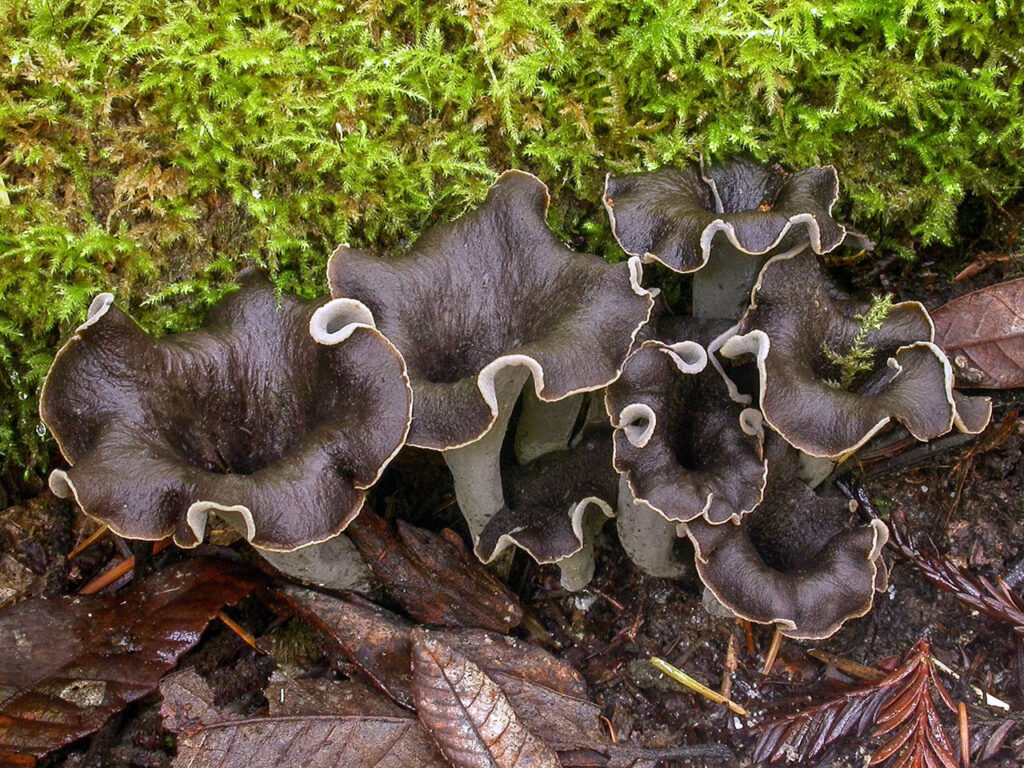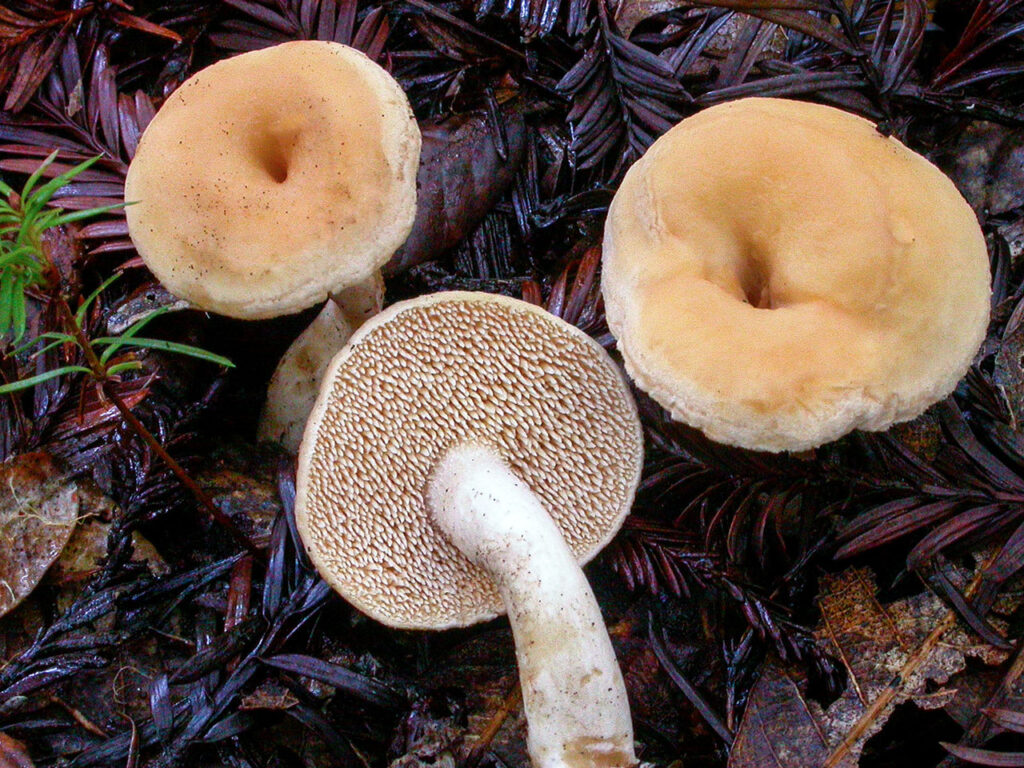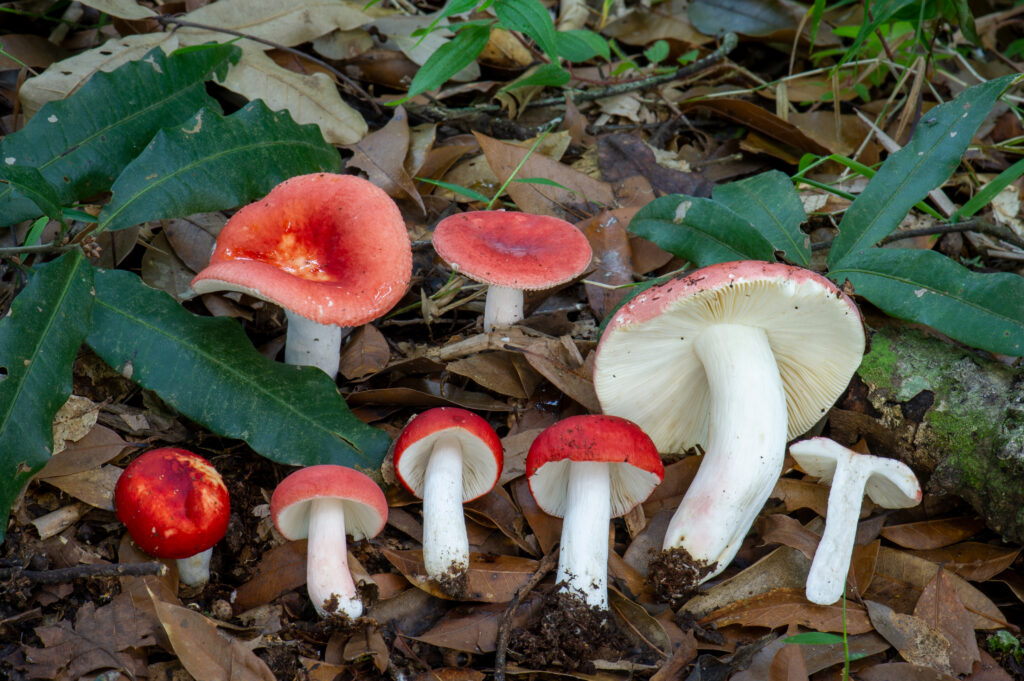Fungi are the interface organisms between life and death.
– Paul Stamets
Hello Everyone! Welcome to the first edition of the Monthly Mushroom. Every other month, I will look at what mushrooms are in season in Mendocino County, how to identify them, and what you can do with them. It should be noted however, that I am not an expert and I’m doing this for fun and fungi, so I apologize in advance if I get any information wrong (but I will try my best not to!). As always, I encourage you to go outside and study mushrooms yourself! There is so much to learn, just remember it is a good rule of thumb to always wash your hands if you touch a species that you can’t 100% identify.

California Black Trumpet
(Craterellus calicornucopioides)
This well-loved species of chanterelle is one of the best mushrooms for beginning identifiers to learn. Extremely tasty, no toxic look-alikes, and it can be very abundant. It can grow solitary or in tufts, often scattered in large troops in the moss or duff of Tanoak and live oak. Seasonally, they peak in late January early February. As of writing this, many of the black trumpets found in the Mendocino area seem to be concentrated in and around Jackson State Forest.

Bellybutton Hedgehogs
(Hydnum Oregonense)
This tiny, but often highly abundant Hydnum is a staple winter edible of the north coast, often fruiting alongside the Yellowfoot (craterellus tubaeformis). This mushroom is one of the few that you can pick straight from the ground and eat it, but I recommend cooking it first for better flavor. May grow solitary, but where you find one you often find others. They generally grow in pine or Tanoak woods with a huckleberry understory, however I’ve also found them in the redwoods. Seasonally, they peak mid-January (perfect timing!), and slowly taper off by May. As of writing this, many bellybutton hedgehogs in the Mendocino area have been found in the Woodlands Campsite, up Little Lake Rd.

Winter Russula
(Russula Cremoricolor)
Although there are many red and cream capped Russula species in California, the Russula Cremoricolor is a winter regular in the mixed forests of Mendocino. It is one of the few more defined mushrooms of this area, having a very expressive color that appears even deep within the redwoods. It can grow solitary, in pairs, or scattered in troops in mixed forests, especially Tanoak. Seasonally, they peak in the beginning of January and they don’t start fully disappearing till mid March. You may find these all over Mendocino, ranging from the headlands all the way deep into the various state parks in the surrounding area.


Comments: no replies